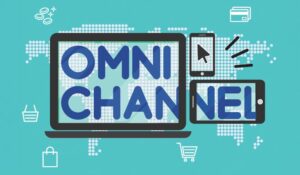Infobip’s Zoha Tapia explains that with the death of the cookie and a reliance on first-party data, companies need to discover how web and mobile push can rescue your omnichannel customer engagement strategy.
The cookie is crumbling, and marketers like yourself are looking for new ways to create connected customer experiences. It all comes down to one thing – leveraging your own first-party data to provide personalized omnichannel experiences that bring customers back.
A lot of businesses are still relying on contextual advertising or alternative mass identifiers. However, it’s time to adopt a Cookie-less Strategy. The good news is that customer data platforms are already out there to help you get a good understanding of your customer.
Now, all you need is a customer engagement hub with the right mix of digital channels that lets you leverage that first-party data and create a true omnichannel experience.
Time for Some Data
Gartner predicts that by 2023, 75% of consumer companies will offer subscription services but only 20% will succeed in increasing customer retention. And there is a good reason for that.
According to the book Marketing Metrics, the success rate of businesses selling to an existing customer is 60–70% versus a 5–10% chance to a new customer.
Why Is That?
- 54% of consumers say receiving impersonal messages annoys them
- 47% ignore non-personalized messages
- 49% would like brands to message them with relevant messages at least once a week
- 32% want to receive messages aligned to their personal interests
- And yet, 74% aren’t receiving personalized communications from brands
In addition, the death of the cookie has led to some businesses being compelled to create direct, permission-based relationships.
Worry not, because with every crisis comes an opportunity. And in this case, you can now deliver hyper-personalized experiences and omnichannel customer engagement – by choosing the right solutions and channel mix.
Pushing Forward With Opt-In Channels
To effectively gather first-party data you need a strong omnichannel customer engagement strategy, where not only are you able to track the customer through their purchasing journey, but also leverage opt-in channels like WhatsApp, email, and one of the most underutilized but strong performing ones, web and mobile push notifications.
Welcome to the World of Push
Push notifications are those tiny pop-up messages that appear on your browser, desktop, or mobile phone to give you important information. Yes, there was a time when it was used by developers to talk about system updates and issues, but with Drag-and-drop Templates, Interactive CTAs, and Rich Media – they are a boon for marketers.
They let you instantly reach your customers in a world full of distractions. You want your customers’ attention and their phones, laptops, or tablets have theirs. So, mobile and web push is the perfect match for your omnichannel customer engagement strategy.
Unlike other channels, opting into web or mobile push doesn’t involve your customer giving any details, only a Click of Consent. And if you have an omnichannel customer engagement hub – you can start collecting event and behaviour-based data. Making sure every message and send time is automatically tailored to each individual customer.
Moreover, when it comes to keeping your customers engaged (and retained) – you can keep them up to date with the latest news, important information, sale announcements, offers, or a simple “we miss you”.
Pushing Your Omnichannel Customer Experience Forward
If you’re contemplating why web and mobile push notifications are integral to your omnichannel marketing mix, here are some key reasons:
High Opt-In Rates: Newsletters need email addresses, SMS and chat apps need a number, web and mobile push need no customer-related information – just permission to pop up on their device. So, if it is about sharing new updates, it would be your first channel of call, and for important news such as delivery information – a great failover.
Instant Messaging: Through the first-party data collected you can set up automated web and mobile push notifications based on behaviour or events – leading to quick, direct messages to customers.
Better Conversions: Mobile and web push notifications are concise and snappy – a short message with one CTA button leads to straight-to-the-point conversations. However, for that, you need enticing headlines, personalized messaging, and a clear CTA.
Why is personalization important? According to BusinessofApps, the reasons why people opt out of push notifications include:
- 12.5% – they are impersonal
- 24.11% – they’re irrelevant
- 21% – they serve no purpose
- 38% – they’re sent at the wrong time
Increased Website and Mobile App Traffic: Dwindling website viewer or active app users? Well, when it comes to winning back your readers, audience, viewers, customers, or users – web or mobile push is the most effective way to reach out to them right away. Win them back with enticing offers, or news they just can’t resist.
Access to the World Wide Web: Chrome, Safari, Edge, and Firefox boast of a market share of 64.92%, 18.77%, 3.56%, and 3.54% across all devices. This means access to a vast demographics of customers, and those who aren’t even actively on your website or mobile app.
Let the Cookie Crumble and Go Omnichannel
As marketers, it’s time to invest in opt-in channels and include them in your customer engagement strategies. Remember, with first-party data and a digital channel portfolio, you can:
- Create Omnichannel Customer Experiences: When you deliver a true omnichannel customer experience, i.e., the right message, at the right time, on the right channel, you will be appreciated. Customers will gladly opt in, give you permission, and help you serve them in a personalized way. All in all, increasing engagement and revenue.
- Create Data-driven Automated Customer Journeys: Now that you have built a meaningful relationship with your customer based on first-party data, you can leverage that to create behaviour-based and event-triggered journeys that are automated yet personal.
- Be Omnipresent: With the shift to online, you can now provide digital experiences across various channels.
Author: Guest Author
Published On: 28th Sep 2021
Read more about - Guest Blogs, Infobip





































